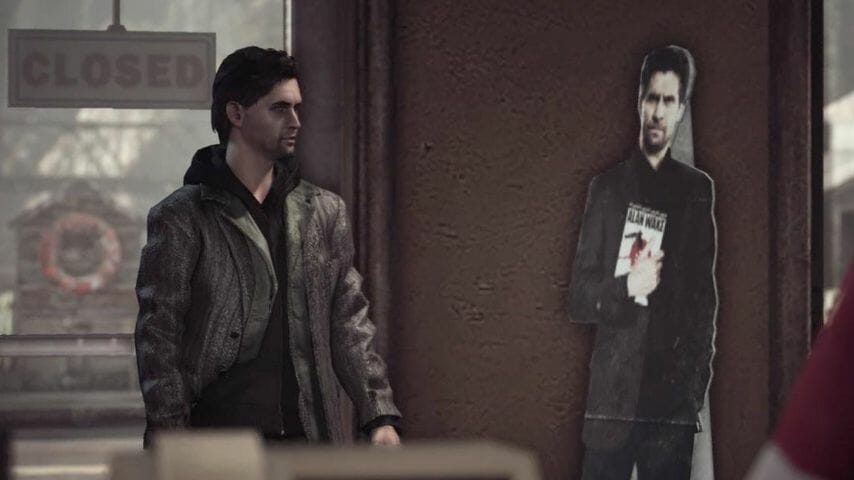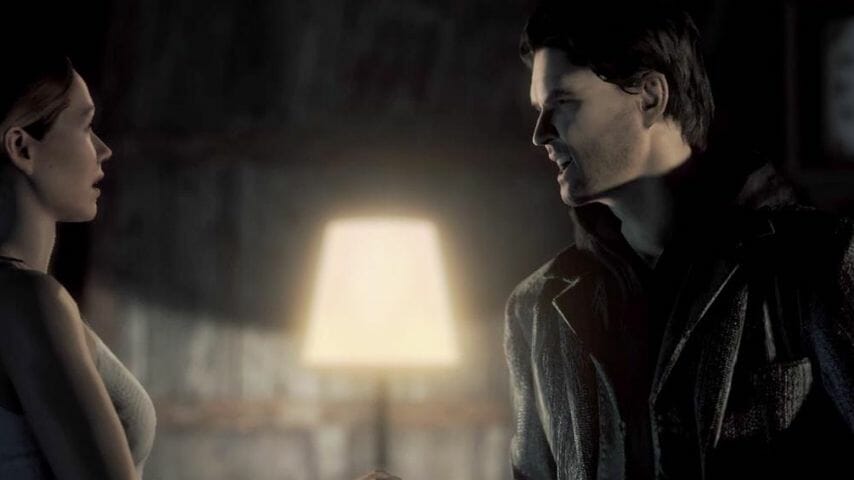The Many Layers of Alan Wake

I’ve always been a bit of a people watcher—I think most of us are. But whereas some might fixate more on interactions, I’m the type drawn to presentation. I like to see how a person wants to be seen. Whereas the shape, color, and conditions of bodies are gloriously uncontrollable, how we choose to adorn them reveals much about the person within. Fashion can draw attention to what we want and conceal our secrets, convey a message or affirm assimilation. The way we present ourselves is a form of art and storytelling—an implicit and important form of communication.
This interest has extended into my gaming habits. I’m intrigued by why characters look the way they do. Naturally, when I first played Remedy’s Alan Wake, I, like many others, was immediately drawn to the titular hero’s chaotic clothing choice containing at least four layers of fabric. However, while we could simply laugh off the absurdity of this, I generally believe that where we lack practicality there is intention, and Alan Wake is a perfect example of that.

Alan Wake’s outermost layer is a tweed coat, complete with black leather elbow patches. In choosing to wear this coat, Alan is making a statement rather than a practical decision. While tweed—a fabric composed of woven wool—is washable, various structures on the jacket, such as shoulder pads and elbow patches, make these pricier coats a bit harder to maintain. Typically, the wearer elects to drop them off the dry cleaners, which seems completely in character for this New Yorker. When wearing tweed, it’s best to avoid inclement weather, machine washing, and wear and tear, as these can distort these coat’s various features. This makes it an especially odd choice to wear when immersing yourself in the great outdoors of the Pacific Northwest.
So then, why wear this jacket? Over the years, tweed jackets have become fairly synonymous with scholarly endeavors. It’s the jacket of college professors and coffee shop writers—a wardrobe staple that says almost as much as the wearer. Alan wears this coat not to shield him from the elements, but to shield the identity he’s created. Even if he is not currently writing, Alan is first and foremost a Writer. This coat is a reminder of his word processing prowess, the late night shows he’s graced, and that Manhattan apartment waiting for him on the other side of the country. While it’s the layer furthest away from him, it’s the one he asks us to see. While he could wear this coat beneath his weather appropriate parka, the notion of taking off that jacket— that mask—and blending into the sea of flannel and puffy coats, is not at all appealing to best-selling author Alan Wake.
However, he still dons the parka beneath this, and much like the tweed jacket, Alan’s parka placement makes little sense. Parkas are insulated and weather resistant—they’d ensure the safety of Alan’s elbow patches as well as provide substantial warmth. Since it’s not doing either of these things, it becomes necessary to think of it as something more representational. There is something inherently assertive about olive green parkas or military style jackets. Worn by both soldiers and rebels, it’s an article that possesses a traditionally “masculine” energy and a pioneering spirit. It’s then fitting that if you were to strip off Alan’s top layer, this is what you’d get.








































